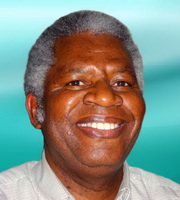It’s true that exercise boosts confidence; however, everyone is prone to moments of doubt and negative self-talk – the key to overcoming or pushing through challenges is with positive thinking. Before you cross that finish line you’ll want to give up and before you lose those next 10 pounds, you’ll want to cheat; positive thinking will help you stay on top of your goal whether it’s a better diet, increasing your 1 rep max, or finishing that first race. So, when you want to give up, drop the dumbbell, or curse burpees, it’s time to practice these positive thinking exercises to help you stick to those goals.
Find Your Mantra
Mantra is like a mini pep-talk; words or phrases that resonate with you and move you to action. Your words or phrase may only mean something to you, based off of a past event in your life or a goal of where you want to be. Whatever it is, it must drive you and encourage you to push beyond what you believe you are capable of at that time. These words of affirmation need to be repeated often; when you’re strong, when you’re in doubt, when you are about to give up – give yourself your pep-talk. Say it in front of the mirror as you stand tall; believe what you tell yourself and most of all believe in yourself. Here are some mantra ideas you can try:
- Eat for the body you want, not for the body you have.
- I deserve this.
- Of course it’s hard. It’s supposed to be hard. If it were easy, everybody would do it.
- I never regret a good workout.
- The food I eat today is the body I wear tomorrow.
- You know your limit, and this is NOT it.
- There are no shortcuts to any place worth going.
See it to Believe It
We’ve all heard of great stars visualizing the game-winning basket, as conceded as it sounds, visualization is how they got to be that star in the first place; you need to see it to believe it. Spend time visualizing yourself crossing that finish line, see that scale read 10 pounds lighter, or imagine yourself rocking the body solid leverage gym. This exercise is important in positive thinking because visualizing where you want to be helps you see the path you need to take and it motivates you to action. The more you see it, the more you can believe it. And when you have moments of doubt, setbacks, and moments of trial, stop and visualize where you want to be and what you need to do to get there.
Acknowledge Your Progress
Keeping a log of what you do or what you eat isn’t to guilt you into working out every day; it’s a way to track your progress. You should record what you did, how you felt, how you’ve improved, and take pride in what you’ve done! Sure, you’ve probably made mistakes, but with positive thinking it’s important to reflect on those mistakes to determine you where you can improve rather than to beat yourself up. As you analyze where you’ve been and where you are now, think on experiences where you were successful or that made you happy, and have helped you realize that it’s all been worth it. These moments are what will keep you going when you’re ready to give in.
Setting and reaching your goals can be hard and discouraging, but if you use positive thinking to face your obstacles with an optimistic outlook you’ll be on your way to setting new limits. So before you throw in the towel, try one of these exercises to renew your motivation.
Image Credit: Lululemon Athletica























